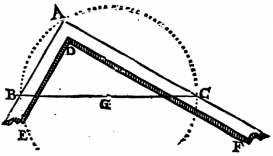The Elements of Euclid (third century BC) was regarded from Antiquity on as a reference work for the most fundamental aspects of arithmetic and geometry and by the seventeenth century had become a true best seller. In the sixteenth century, however, the multitude of printed editions of the Elements was rivaled by the growing number of printed treatises of practical geometry. This led more and more editors and commentators of Euclid to adopt a more practical approach in their interpretation of the Elements, e.g. by teaching the instrumental procedures involved in the concrete construction of figures or by displaying possible applications of Euclid’s propositions.
The goal of this project is to study the way in which early modern editors and commentators of Euclid drew on the approach to geometry displayed in practical geometrical treatises to reassess the content and form of the Elements. By comparing the sixteenth-century printed editions and commentaries on Euclid (and notably on the first book) according to this aim, this project will show how the Euclidean tradition and the representation of elementary geometry evolved up to the seventeenth century as a result of this process of practicalization of the Elements, and how this contributed to the constitution of the new approach to geometry canonically represented by the Géométrie of Descartes (1637).

